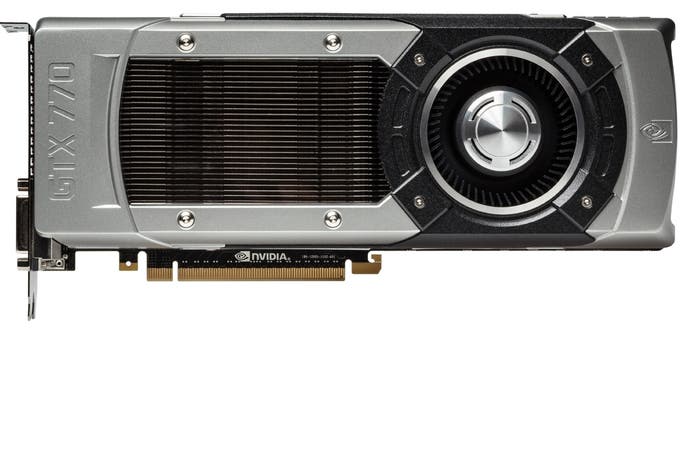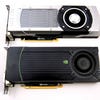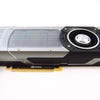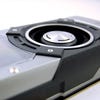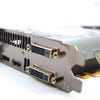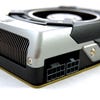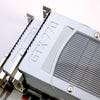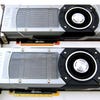Nvidia GeForce GTX 770 review
Power to the people.
Some might say that Nvidia's second generation Kepler is starting to look rather similar to the first. It's fair to say that at an architectural level at least, the new GeForce GTX 770 is to all intents and purposes a match for last year's GTX 680. There are value-added performance-enhancing additions, an improved chassis and cooling, but at the heart of the product is the same chip - codenamed GK104 - that powered last year's Nvidia flagship.
We'll need to wait for the arrival of next year's 20nm processors and the new Maxwell architecture to see the next level in high-end performance, but in the meantime, the revised GTX 7xx line-up is all about additional refinement and improved value. Last year, GTX 680 shipped at a worryingly high price of around £400 but over the last twelve months, prices have dropped by an average of £70. The new GTX 770 comes in at the same, lower price, and is tangibly faster, usefully opening up the gap with the less expensive GTX 670.
A quick look at the spec demonstrates how Nvidia has achieved this. The GTX 770 features the same 1536 CUDA cores as the GTX 680, with a slight performance boost - a 40MHz core clock boost (1046MHz vs. 1006MHz). The implementation of Nvidia's GPU Boost 2.0 ensures that the second-gen Kepler utilises its auto-overclocking feature more vigorously, and there's a slight 27MHz increase in max boost too (1085MHz vs. 1058MHz). These are small enhancements overall, but welcome nonetheless. More noteworthy is that the GTX 770 features faster onboard GDDR5 than anything else in the Nvidia line-up - including the Titan - with 7GHz RAM implemented for the first time on any consumer-level graphics card. Max power consumption rises though: up to 230W, up from the 195W of the 680 and the 170W of the 670. There's a sense that second-gen Kepler is literally brute-forcing its way past its predecessor.
An area of genuine, tangible improvement comes from the chassis. The GTX 770 features the same beautiful casing as the GTX 780 and the Titan - a world apart from the basic plastics of the reference versions of last year's Nvidia top-end offerings. You get the same ultra-quiet Titan cooler too: during our testing we were quite taken aback by just how much more discrete it was than the GTX 670 reference card in particular.
So let's not beat about the bush and see what kind of gameplay experience we can extract from the new card. Our test subject is, perhaps inevitably, Crysis 3. Our thinking here is pretty straightforward. If the GTX 770 acquits itself well with this game, you can rest assured that it can handle pretty much anything else at the same quality level, most likely with even higher frame-rates.
Now, we know from the past that pumping up every one of Crysis 3's quality presets to the absolute maximum can bring any PC to its knees - including a 3x Titan SLI ultimate gaming PC. We were looking to run this challenging game at as close to a sustained 60 frames per second as possible, while still ramping up the quality setting at least to the "high" level - one notch down from the maximum. We also wanted v-sync engaged to eliminate screen-tear, but in retrospect, this is the kind of scenario where Nvidia's adaptive v-sync would really shine: lock at 60, tear below until the engine re-stabilises.
To achieve our target 1080p60, we could retain the very high quality textures, but we had to be sensible with anti-aliasing. The SMAA 2x setting proved very useful during our previous testing, so we employed it here too. We also wondered just how playable these settings would be at 2560x1440 - an increasingly popular resolution setting owing to the arrival of cheaper, high quality IPS monitors - so we re-ran our tests in order to produce a comparison. In all of our performance analyses in this review, we used a Core i7 3770K PC overclocked to 4.3GHz with 16GB of 1600MHz DDR3 RAM, and we loaded our games from a 256GB SSD.
"Performance is good running Crysis 3 on reasonably high quality settings at both 1080p and 2560x1440 - as good a place as any to start gauging the power of the GeForce GTX 770."
While the GTX 770 simply doesn't have the horsepower to lock at 1080p60 on high settings, we still got a very decent, responsive gameplay experience. Further settings tweakery is required to achieve the same level of response at 2560x1440 - it's clear that the additional 77 per cent of resolution is going to require significant reallocation of GPU resources. But the main takeaway is clear - this is a capable card that is well equipped for cutting-edge gaming at very, very high resolutions. That's something we'll explore more deeply now as we engage the GTX 770 across a range of demanding modern games, and stack the card up against competing Keplers past and present.
Benchmarks: Two generations of flagship Keplers
Moving onto our game engine benchmarks, it's clear that the GTX 770 occupies a rather unique niche. It costs about the same as the GTX 680 while offering a small, but tangible performance boost, while the GTX 670 noticeably lags behind but retails for around £50-£60 less. If you're looking to spend wads of cash on a new graphics card, you'll always be left wondering how your potential purchase compares to the top-of-the-range offerings, so we've also included the cut-down Titan - the GTX 780 - into our testing in order to judge performance levels from the top-end of the Kepler range.
In our first batch of metrics, we centre on 1080p performance, with our test subjects - Metro: Last Light, Tomb Raider, Sleeping Dogs, Hitman: Absolution, BioShock Infinite and Metro 2033 - running at maximum settings (albeit with hardware PhysX and gimmicks like TressFX turned off). Our thinking here is that a GTX 770 purchase weighs in at around £320/$399, and for that sort of money, the first instinct of a new buyer is most likely to dial everything up to the maximum and to see what happens.
The results are intriguing - the GTX 770 offers anything up to a seven per cent performance boost over the GTX 680, while the gap widens significantly up to a 26 per cent increase over the GTX 670. Of course, the monstrous GTX 780 rules the roost - as you would expect from a £550/$650 GPU. It's upwards of 20 per cent better than our main test subject and in certain cases - like Sleeping Dogs and Hitman: Absolution - the advantage moves north of 40 or even 50 per cent. Our guess here is that the extreme super-sampling of the former, and the 8x MSAA of the latter better suits the wider memory bus, the higher levels of RAM (3GB vs. 2GB) and the additional ROPs (48 vs. 32) found in the top-end card.
| 1920x1080 | GTX 670 | GTX 680 | GTX 770 | GTX 780 |
|---|---|---|---|---|
| BioShock Infinite, DX11 Ultra DDOF | 69.7FPS | 75.1FPS | 77.3FPS | 94.6FPS |
| Tomb Raider, Ultra, FXAA | 78.7FPS | 89.7FPS | 94.2FPS | 116.6FPS |
| Metro 2033, Very High, 4x MSAA | 31.0FPS | 32.5FPS | 33.5FPS | 47.5FPS |
| Metro: Last Light, Very High, SSAA | 26.5FPS | 31.5FPS | 33.5FPS | 40.0FPS |
| Hitman: Absolution, Ultra, 8x MSAA | 31.4FPS | 33.4FPS | 33.7FPS | 47.0FPS |
| Sleeping Dogs, Extreme | 39.1FPS | 44.9FPS | 48.0FPS | 58.0FPS |
Mathematically, the GTX 770 seems to offer a fairly decent value proposition. More performance than the GTX 680 for the same price, and average frame-rates that increase over the GTX 670 in line with the additional cash being asked of you. Only in the minority of cases can the GTX 780 offer a performance boost in line with its premium price-tag - and we do have to wonder how that would change given a GDDR5 increase to the GTX 770. We understand that 4GB versions of the card will be made available - and factoring in the importance of video RAM with the arrival of the next-gen consoles, it's well worth bearing that in mind. In truth, we would have preferred an increase in overall RAM as standard rather than a faster 2GB allocation.
Now, perhaps you might be looking at the benchmark table above and thinking to yourself that you'd expect all games to run at 1080p60 on a high-end graphics card. In truth, all of the cards we have on test should be able to do that. It's just a case of realising that many games are targeting SLI, multi-GPU set-ups for the absolute highest settings. BioShock Infinite and Tomb Raider are perhaps the most "honest" benchmarks in that they do not factor in performance sapping features like insane multi-sampling MSAA or SSAA (literally rendering internally at a higher resolution then down-sampling). In the case of BioShock, it's simply not used at all, while on Tomb Raider, it's an option that isn't enabled in the standard "ultra" mode. Those two games gives us perhaps our most realistic assessment of the difference in performance level in an actual real-life gaming scenario.
With that in mind, we re-ran our tests at 2560x1440 resolution, paring down the quality settings by one "notch". The results are rather interesting, to say the least.
| 2560x1440 | GTX 670 | GTX 680 | GTX 770 | GTX 780 |
|---|---|---|---|---|
| BioShock Infinite, DX11 Very High | 62.9FPS | 69.0FPS | 74.7FPS | 89.9FPS |
| Tomb Raider, High, FXAA | 76.5FPS | 82.8FPS | 93.1FPS | 113.6FPS |
| Metro 2033, High, 4x MSAA | 24.0FPS | 25.0FPS | 26.5FPS | 39.5FPS |
| Metro: Last Light, High, No SSAA | 34.0FPS | 39.5FPS | 43.0FPS | 50.0FPS |
| Hitman: Absolution, High, 8x MSAA/2x MSAA | 21.2FPS/ 40.3FPS | 21.8FPS/ 41.8FPS | 22.8FPS/ 45.2FPS | 32.0FPS/ 58.0FPS |
| Sleeping Dogs, High | 46.5FPS | 52.7FPS | 56.8FPS | 67.4FPS |
In many cases, we actually find that with just a small hit to overall quality, and the removal of SSAA, we can run games natively at a much higher resolution and still enjoy very decent frame-rates - in some cases significantly higher than running at 1080p/ultra. You'll note that the reduction in Hitman: Absolution doesn't exactly help with the performance level and indeed, even the GTX 780 can't keep up the pace. However, if you reduce the MSAA tweakable down from 8x to 2x, you literally double your performance. Bearing in mind the artistic style of the game and the fact that we're also running FXAA anti-aliasing at the same time, you're still getting an excellent level of image quality and the increase in smoothness and fluidity is more than worth the trade.
We've often talked about the law of diminishing returns in graphical presets in PC titles, and this only seems likely to change radically once the next-gen consoles arrive. Put simply, hopefully all of those billions of transistors will have much better things to do rather than processing ever more insane methods of anti-aliasing. In the meantime, the major takeaway in the here and now for prospective GPU buyers is that all of these cards can play taxing games well at 2560x1440, just as long as you accept that ultra-level settings are off the table.
Nvidia GeForce GTX 770: the Digital Foundry verdict
"Second-gen Kepler is all about refinement and improved value - something that should ripple down through the rest of the range."
Bearing in mind the expense level of the GTX 780, and the fact that the new GTX 770 tangibly outperforms the GTX 680, we were worried that Nvidia would push up pricing for this latest offering. The good news is that while this is still an expensive card, it seems to be fairly well priced: £330 is much cheaper than the launch cost for the GTX 680 last year, matching or even beating it on price even now, and offers decent value in terms of price/performance up against the GTX 670.
We would expect the arrival of this card to push down prices across the entire GTX 6xx range over the following weeks - a situation that could result in some decent bargains, particularly for the GTX 670 and the very similar 660 Ti. Both of those cards have much lower power requirements than the 770, so while you lose some performance they may be better suited to a smaller form factor PC, for example. At the same time, we should see movement on price from AMD's Radeon HD 7970 and 7950 too - their replacements apparently aren't due until closer to the end of the year now, and aggressive value is the firm's stock in trade.
More power, better value rippling down through the stack - second-gen Kepler may not be a revolution, but it's sure to please enthusiast PC gamers.
